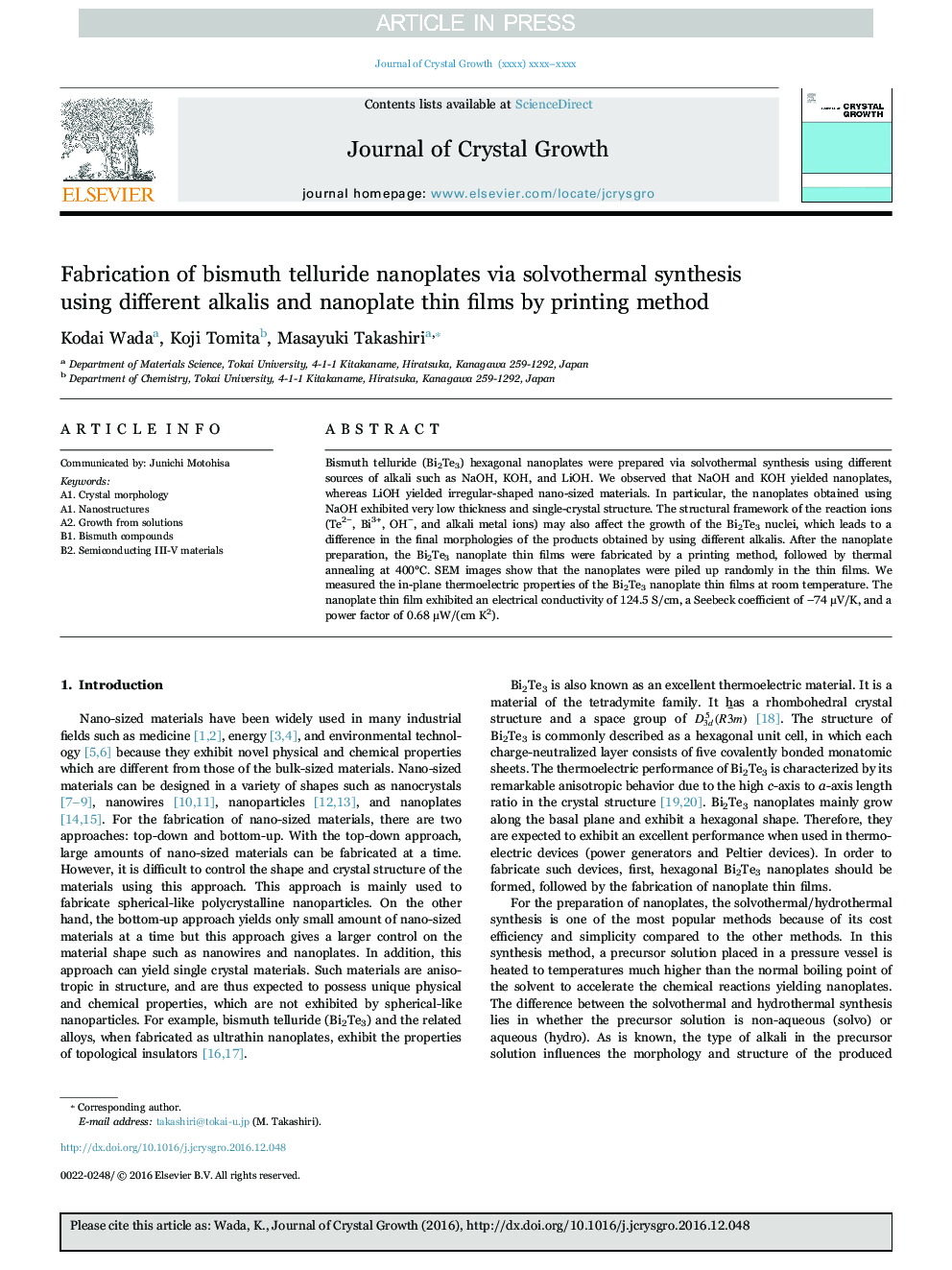| Article ID | Journal | Published Year | Pages | File Type |
|---|---|---|---|---|
| 5489561 | Journal of Crystal Growth | 2017 | 5 Pages |
Abstract
Bismuth telluride (Bi2Te3) hexagonal nanoplates were prepared via solvothermal synthesis using different sources of alkali such as NaOH, KOH, and LiOH. We observed that NaOH and KOH yielded nanoplates, whereas LiOH yielded irregular-shaped nano-sized materials. In particular, the nanoplates obtained using NaOH exhibited very low thickness and single-crystal structure. The structural framework of the reaction ions (Te2-, Bi3+, OH-, and alkali metal ions) may also affect the growth of the Bi2Te3 nuclei, which leads to a difference in the final morphologies of the products obtained by using different alkalis. After the nanoplate preparation, the Bi2Te3 nanoplate thin films were fabricated by a printing method, followed by thermal annealing at 400°C. SEM images show that the nanoplates were piled up randomly in the thin films. We measured the in-plane thermoelectric properties of the Bi2Te3 nanoplate thin films at room temperature. The nanoplate thin film exhibited an electrical conductivity of 124.5 S/cm, a Seebeck coefficient of -74 μV/K, and a power factor of 0.68 μW/(cm K2).
Keywords
Related Topics
Physical Sciences and Engineering
Physics and Astronomy
Condensed Matter Physics
Authors
Kodai Wada, Koji Tomita, Masayuki Takashiri,
